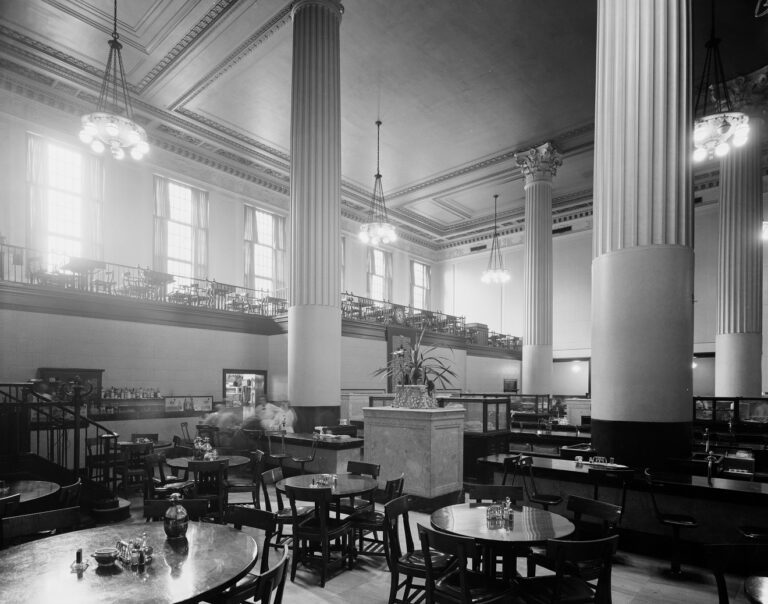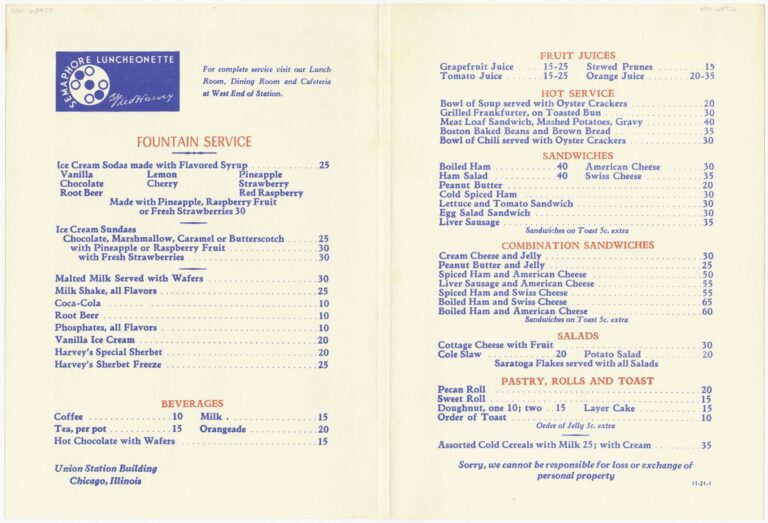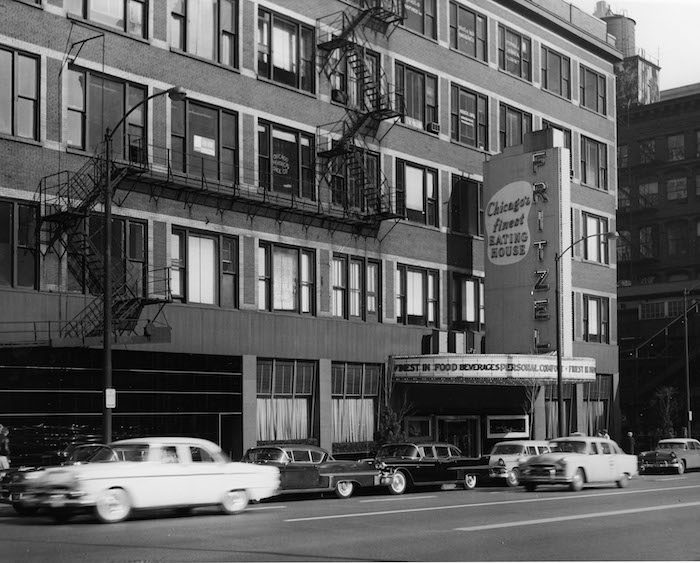
Fred Harvey lunchroom and restaurant at Union Station, Chicago, June 29, 1943. HB-07469-B, CHM, Hedrich-Blessing Collection.
When traveling by train was common practice, stopping at a Fred Harvey-owned establishment was almost a guarantee.
In 1876, a young English immigrant named Fred Harvey opened a small restaurant at a train depot in Topeka, Kansas. It was the start of what became an empire of hotels, shops, and eating establishments extending from the Great Lakes to the Pacific coast. By the 1880s, Harvey was operating seventeen restaurants along the Atchison, Topeka and Santa Fe Railway’s main line to which he added fifteen Harvey House restaurants by 1891. Harvey’s success was the result of his belief in giving delicious food with excellent service with linen and silverware at reasonable prices.
In Chicago, Harvey Co. establishments operated at both the Dearborn Station and Union Station. The company had eateries in Union Station from the beginning when the building opened in 1925, including the lunchroom and club-like dining room (top image), the cafeteria, Shoppers Mart soda fountain, and Iron Horse cocktail lounge. The menu shown above is for the Semaphore Luncheonette in 1941. All the items could be prepared or served quickly, making them ideal for travelers on a tight schedule. The Harvey Co. expanded into non-railroad restaurants, and Chicago had the Kungsholm Restaurant, Harvey House Restaurant, and Harlequin Restaurant, among others.
Fred Harvey died in 1901, and his sons operated the company through the 1930s. As air and car travel increased, business at railroad-based eateries declined. World War II provided a temporary boost with the Harvey Co. making meals for troop trains, but by the 1950s, railroad companies were consolidating service and closing depots. The Harvey Co. shifted its food service and hotel business to US national parks and was purchased by Amfac Corp. in 1968. In 2019, Amtrak announced plans to renovate the former Fred Harvey restaurant at Union Station and transform it into a dining and retail complex.

Inside front cover of 75th Anniversary Semaphore Luncheonette restaurant menu, Chicago, 1941. CHM, ICHi-068925, ICHi-068926.
Trace the city’s evolution from meatpacking capital to foodie paradise through our Google Arts & Culture exhibit Touring Chicago’s Culinary History, which features menus from the CHM Research Center.
